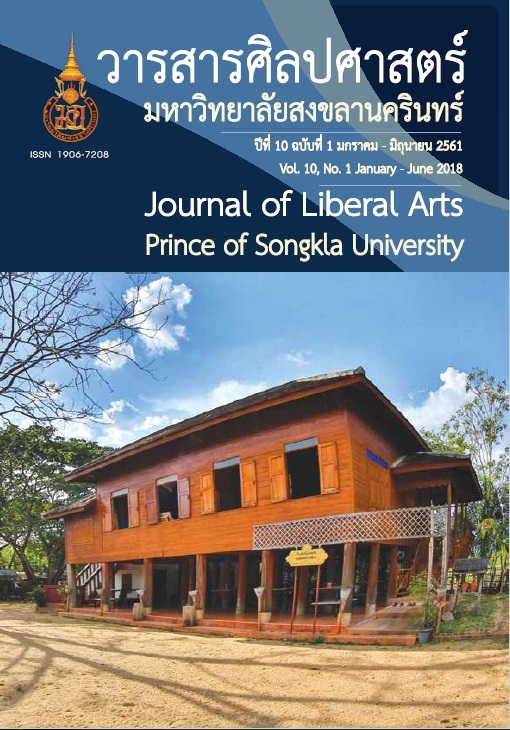Influences of marketing mix on brand image, perceived value, satisfaction and customer loyalty of Intel chip products
Keywords:
Marketing MIX, brand image, perceived value, customer satisfaction, customer loyaltyAbstract
The objectives of this research were to develop and validate
a causal relationship model of marketing MIX on brand image, perceived value, satisfaction and customer loyalty of Intel chip products with empirical data. The researchers used quantitative methods which involved empirical research. The instrument of this research was a questionnaire used to collect data from 552 customers, who use Intel chip products. The statistics used in data analysis were frequency, percentage, mean, standard deviation and structural equation model analysis.
It was found that the model was consistent with the empirical data. Goodness of fit measures was found to be: Chi–square = 338.93 (df = 356, p–value = 0.734); Relative Chi–square (2/df) = 0.952; Goodness of Fit Index (GFI) = 0.963; Adjusted Goodness of Fit Index (AGFI) = 0.945; and Root Mean Square Error of Approximation (RMSEA) = 0.000. It was also found that:
1) product dimension had a positive and direct influence on brand image;
2) price dimension had a positive and direct influence on brand image;
3) promotion dimension had a positive and direct influence on brand image;
4) product dimension had a positive and direct influence on perceived value;
5) price dimension had a positive and direct influence on perceived value;
6) promotion dimension had a positive and direct influence on perceived value; 7) price dimension had a positive and direct influence on customer satisfaction; 8) brand image had a positive and direct influence on perceived value; 9) brand image had a positive and direct influence on customer satisfaction;
10) perceived value had a positive and direct influence on customer satisfaction; and 11) customer satisfaction had a positive and direct influence on customer loyalty
References
Bloemer, J. & De Ruyter, K. (1998). On the relationship between store image, store satisfaction and store loyalty. European Journal of Marketing, 32(5/6), 499–513. doi:10.1108/03090569810216118.
Caruana, A. (2002). Service loyalty: The effects of service quality and the mediating role of customer satisfaction. European Journal of Marketing, 36(7/8), 811-828. doi: http://dx.doi.org/10.1108/03090
560210430818.
Ennew, C. T., & Binks, M. R. (1999). Impact of participative service relationships on quality, satisfaction and retention: An exploratory study. Journal of Business Research, 46(2), 121-132. doi: http://dx.doi.org/10.1016/S0148-2963(98)00016-2.
Golob, T. F. (2003). Review structural equation modeling for travel behavior research. Transportation Research, 37, 1-25. doi: http://dx.doi.org/10.1016/S0191-2615(01)00046-7.
Hair, J. F., Jr., Black, W. C., Babin, B. J., & Anderson, R. E. (2010). Multivariate data analysis (7th ed.). Upper Saddle River, New Jersey: Prentice Hall.
Helgesen, Ø., Havold, J. I., & Nesset, E. (2010). Impacts of store and chain images on the‘‘quality–satisfaction–loyalty process’’ in petrol retailing. Journal of Retailing and Consumer Services, 17(2), 109-118. doi: http://dx.doi.org/10.1016/j.jretconser.2009.11.001
Kim, J.-H., & Hyun, Y. J. (2011). A model to investigate the influence of marketing-mix efforts and corporate image on brand equity in the IT software sector. Industrial Marketing Management, 40(3), 424-438. doi: http://dx.doi.org/10.1016/j.indmarman.2010.06.024
Kotler, P. (2000). Marketing management. New Jersey: Prentice-Hall.
Kotler, P., & Keller, K. L. (2009). Marketing management. New Jersey: Prentice Hall.
Lai, F., Griffin, M., & Babin, B. J. (2009). How quality, value, image, and satisfaction create loyalty at a Chinese telecom. Journal of Business Research, 62(10), 980–986. doi: http://dx.doi.org
/10.1016/j.jbusres.2008.10.015.
Lombart, C., & Louis, D. (2014). A study of the impact of corporate social responsibility and price image on retailer personality and consumers' reactions (satisfaction, trust and loyalty to the retailer). Journal of Retailing and Consumer Services, 21(4), 630-642. doi: http://dx.doi.org/10.1016/j.jretconser.2013.11.009
Oliver, R. L., (1997). Satisfaction: A behavioral perspective on the consumer. Irwin/ McGraw-Hill, NY.
Pan, Y. & Zinkhan, G. M. (2006). Determinants of retail patronage: A meta-analytical perspective. Journal of Retailing, 82(3), 229–243. doi: http://dx.doi.org/10.1016/j.jretai.2005.11.008
Shoosanuk, A., & Rattanachaibandan, J. (2013). Influences of the marketing Mix on brand image, perceived value, satisfaction and loyalty of consumers of the CP Fresh Mart’s instant food in Bangkok. Humanities and Social Sciences Journal, 30(2), 133-154. [In Thai]
Shoosanuk, A., Acting Second Lieutenant Rojchotikul, T., & Shoosanuk, C. (2014). Influence of marketing MIX on perceived values, customer satisfaction and customer loyalty of Tomchic’s store. Panyapiwat Journal, 6(1), 18-32. [In Thai]
Sweeney, C. J., & Soutar, N. G. (2001). Consumer perceived value: The development of a multiple item scale. Journal of Retailing, 77(2), 211-213. doi: http://dx.doi.org/10.1016/S0022-4359(01)00041-0
Upamannyu, N. K., & Sankpal, S. (2014). Effect of brand image on customer satisfaction & loyalty intention and the role of customer satisfaction between brand image and loyalty intention. Journal of Social Science Research, 3(2), 274-285.
Zeithaml, V. A. (1988). Consumer perceptions of price, quality and value: A means-end model and synthesis of evidence. Journal of Marketing, 52(3), 2-22. doi: 10.2307/1251446.
Downloads
Published
How to Cite
Issue
Section
License
The authors retain the copyright to their article but the Journal of Liberal Arts, Prince of Songkla University reserves the exclusive rights to first publication.






